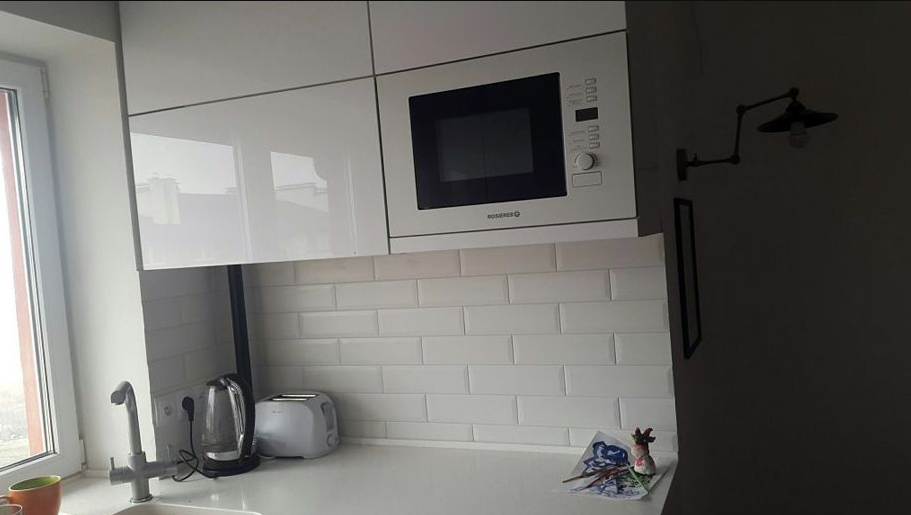Microwave oven is one of the most common household appliances that can be found in almost every home. It makes our daily life much easier, allowing us to quickly heat up food or cook simple dishes. However, many people wonder: how much kW does a microwave take? The answer to this question depends on several factors, including the microwave’s power, its mode of operation and the length of time it is used.
What is microwave power
Before moving on to calculations, it is important to understand what microwave power is. Microwave power is an indicator that determines how much energy the device consumes to fulfil its functions. This parameter is usually indicated in watts (W) and varies depending on the model and type of device.
The power of a microwave has a direct impact on its performance. The higher the power, the faster the microwave can heat or cook food. However, higher power also means higher electricity consumption.
Typical microwave power ratings:
| Type of microwave | Power (W) |
| Compact microwave | 600-800 W |
| Standard microwave | 800-1000 W |
| Powerful microwave | 1000-1500 W |
Compact microwaves with 600-800 watts of power are ideal for small kitchens or for heating small portions of food.
Standard 800-1000W models are the most common choice among consumers, providing a balance between performance and power consumption.
Powerful microwaves with 1000-1500 watts are used in more demanding situations where you need to heat or cook large amounts of food quickly.
How to calculate how much kW a microwave takes
To determine how many kilowatts (kW) of energy a microwave consumes, you need to know its wattage and run time. Example calculation:
Suppose you have a 1000 W microwave and it runs for 10 minutes. In this case, the calculation would be as follows:
- Convert microwave power to kilowatts:
- Since 1 kW = 1000 watts, the power of your microwave is 1 kW.
- Convert the operating time from minutes to hours:
- 10 minutes of microwave time equals 10 divided by 60 hours, which is 0.167 hours.
- Multiply the power by the run time:
- 1 kW × 0.167 hours = 0.167 kWh
Thus, during 10 minutes of operation, the microwave consumes 0.167 kWh of energy. If the microwave is operated longer, for example 30 minutes, the consumption will be 0.5 kWh.
Example of calculation for 30 minutes:
| Operating time | Power (W) | Conversion to kW | Time conversion to hours | Consumption (kWh) |
| 10 minutes | 1000 W | 1 kW | 0.167 hours | 0.167 kWh |
| 30 minutes | 1000 W | 1 kW | 0.5 hours | 0.5 kWh |
This calculation demonstrates how the relationship between power and time of use affects the total energy consumption.
Effect of microwave power on energy consumption
The power of a microwave directly determines how many kW of energy it consumes. The higher the power of the device, the more energy it will require to operate. However, high power also has its advantages, as it allows food to be heated or cooked faster, which can shorten the operating time and therefore reduce the overall energy consumption.
Example:
- A 1200W microwave: this model will heat a dish faster than an 800W model, but the energy consumption will be higher.
- Microwave with 800W power: this model will heat food more slowly, but energy consumption will be lower.
It is important to find a balance between power and energy consumption depending on your needs. For example, if you often cook large quantities of food, a powerful microwave may be more time efficient, although it will require more energy.
Microwave power and modes of operation
Modern microwaves offer several modes of operation, each of which consumes a different amount of energy. Let’s look at the main ones:
- Warming mode: This mode is used to heat food quickly. In this mode, the microwave operates at full power, which results in maximum energy consumption. For example, if your 1000W microwave is running on reheat, it will consume 1 kWh for every hour of operation.
- Defrost mode: In this mode, the microwave operates at reduced power to defrost food slowly. Usually the power is reduced to 30-50% of the maximum power. If your 1000W microwave is operating in defrost mode, the actual energy consumption will be around 300-500 watts per hour of operation.
- Cooking mode: This mode is used to cook various dishes. The microwave power in this mode can vary depending on the selected recipe. For example, some dishes require high power, which increases energy consumption, while others can be cooked at lower power.
| Mode of operation | Utilisation capacity (%) | Approximate power (W) | Energy consumption (kWh per 1 hour) |
| Warm-up | 100% | 1000 W | 1 kWh |
| Defrosting | 30-50% | 300-500 W | 0.3-0.5 kWh |
| Cooking | Varies | Depends on the recipe | Varies |
Saving energy when using the microwave
Although microwaves are considered relatively energy efficient appliances, there are ways to reduce their energy consumption. Here are some tips to help you use your microwave more efficiently:
- Use the right power: It is not always necessary to use the maximum power of the microwave. For example, for heating small portions of food or defrosting food, it is sufficient to set the microwave to a lower power setting. This will reduce energy consumption and lower your electricity bill.
- Keep track of the operating time: Microwaves only consume energy during their operating time, so it is important not to exceed the required heating or cooking time. For example, using a timer will help you to control the exact time the appliance is running and avoid unnecessary energy consumption.
- Use the right cookware: Cookware that is suitable for the microwave helps to speed up the heating process, which reduces the operating time and energy consumption. For example, glass or ceramic dishes help to distribute heat evenly, which speeds up the heating process.
- Clean the microwave regularly: Contamination inside the microwave can reduce its efficiency. For example, food residue or grease on the walls of the chamber can absorb some of the microwaves, increasing the operating time and energy consumption. Regular cleaning of the microwave helps to keep it in good condition and reduces energy consumption.
The power of a microwave plays a key role in determining how many kW of energy this appliance consumes. Depending on the model, mode of operation and duration of use, energy consumption can range from negligible to significant. Understanding how your microwave works and using its features wisely can help you not only save time, but also reduce your energy costs. By following simple energy-saving tips, you can make using your microwave more efficient and less costly.
Shop for a new microwave and get the maximum benefit with reBITme. We wish you a successful purchase!





